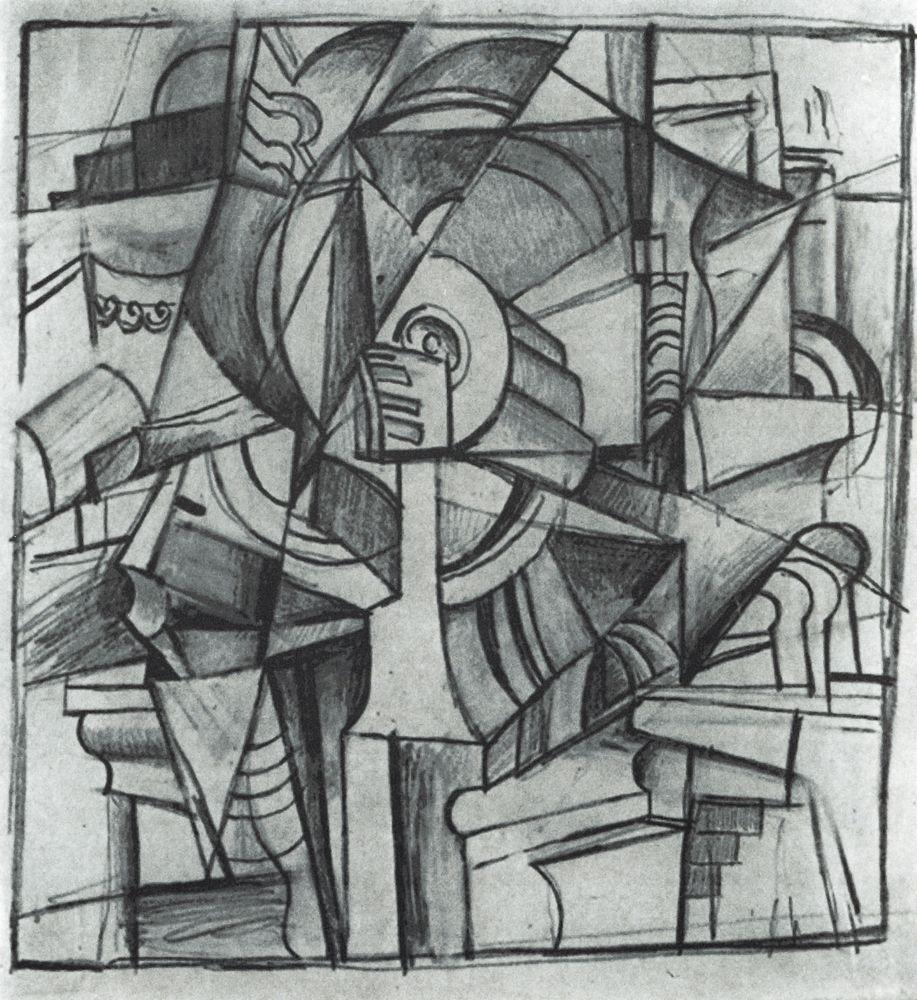
But Rozanova combines the innovations of her French predecessors with a focus on dramatic color contrasts which bears the traces of her own, unique style, with an apparent view towards using color to represent the scene's emotional cadence. The thick outlines and flattened perspectival space, and the bold and jarring use of color in general, are comparable both with Matisse's work and with that of the German Expressionist movement.

Rozanova's interest in all-over decorative patterning, for example, is reminiscent of the Fauvist Henri Matisse's domestic scenes, while the use of bright color-contrasts in preference to blacks and greys in order to indicate areas of shadow is similar to Matisse's Blue Nude of 1907. Critic Nina Gurianova describes works such as In The Café as possessing a "laconic, expressive, and vivid childlike manner", referring in particular to the "deliberately crude and straightforward" painting style, for which various reference-points can be cited. Reminiscent of works depicting the louche café-culture of Paris, by Paul Gauguin, Edgar Degas, Henri de Toulouse-Lautrec, and others, In a Café nonetheless retains a distinctively Russian, Neo-Primitivist aesthetic, tapping into the historical tradition of folk-art already being mined by Goncharova and others by this time. This relatively early work indicates Rozanova's awareness both of the French avant-garde art being exhibited in Moscow at the time and the Neo-Primitivist aesthetics of her Russian contemporaries, including Natalia Goncharova. This connection was reflected in the display of her work in an exhibition of international Futurism in Rome in 1914. Amongst the various painters associated with the movement, however, Rozanova was uniquely indebted to Italian models, including the work of Umberto Boccioni and Giacomo Balla. However, some critics have pointed out that the influence of Italian Futurism was relatively slim, and have instead emphasized the importance of prior developments in Russian art such as Neo-Primitivism and Rayonism to the conception of Cubo-Futurist style. The term Cubo-Futurism is applied to a range of Russian art seen to have synthesized the influences of French Cubist and Italian Futurist painting.She linked these experiments to her attempts to express an inner spiritual energy through her work, and the resultant body of paintings and collages makes a unique contribution to movements otherwise defined by more purely geometrical forms of abstraction. Rozanova's Cubo-Futurist and Suprematist paintings were set apart from those of her peers, including Malevich and El Lissitzky, by her emphasis on the interplay and vibrancy of color, visual exercises in exploring the emotional and conceptual effect of interacting tonal groups.

Indeed, she spoke of such work as an unacknowledged precursor for Malevich's characterization of Suprematism.

This movement is now associated with Kazimir Malevich's iconic reduction of the picture plane in works such as Black Square, but Rozanova's abstract collages and paintings were equally vital exemplars of the pure abstraction which defined the style. Rozanova was at the center of the artistic debates and experiments in Russia leading to the conception of Suprematism in 1915.


 0 kommentar(er)
0 kommentar(er)
